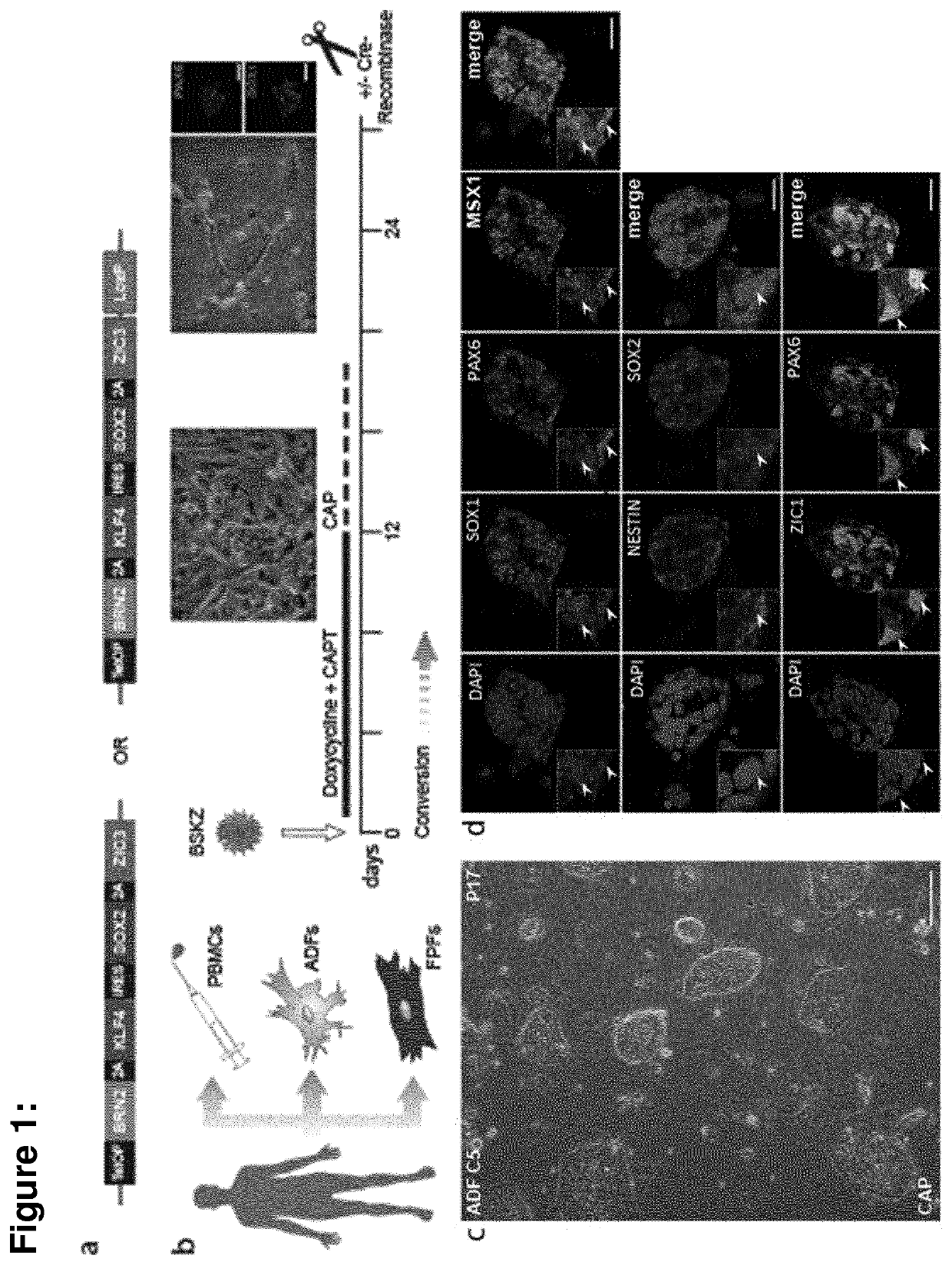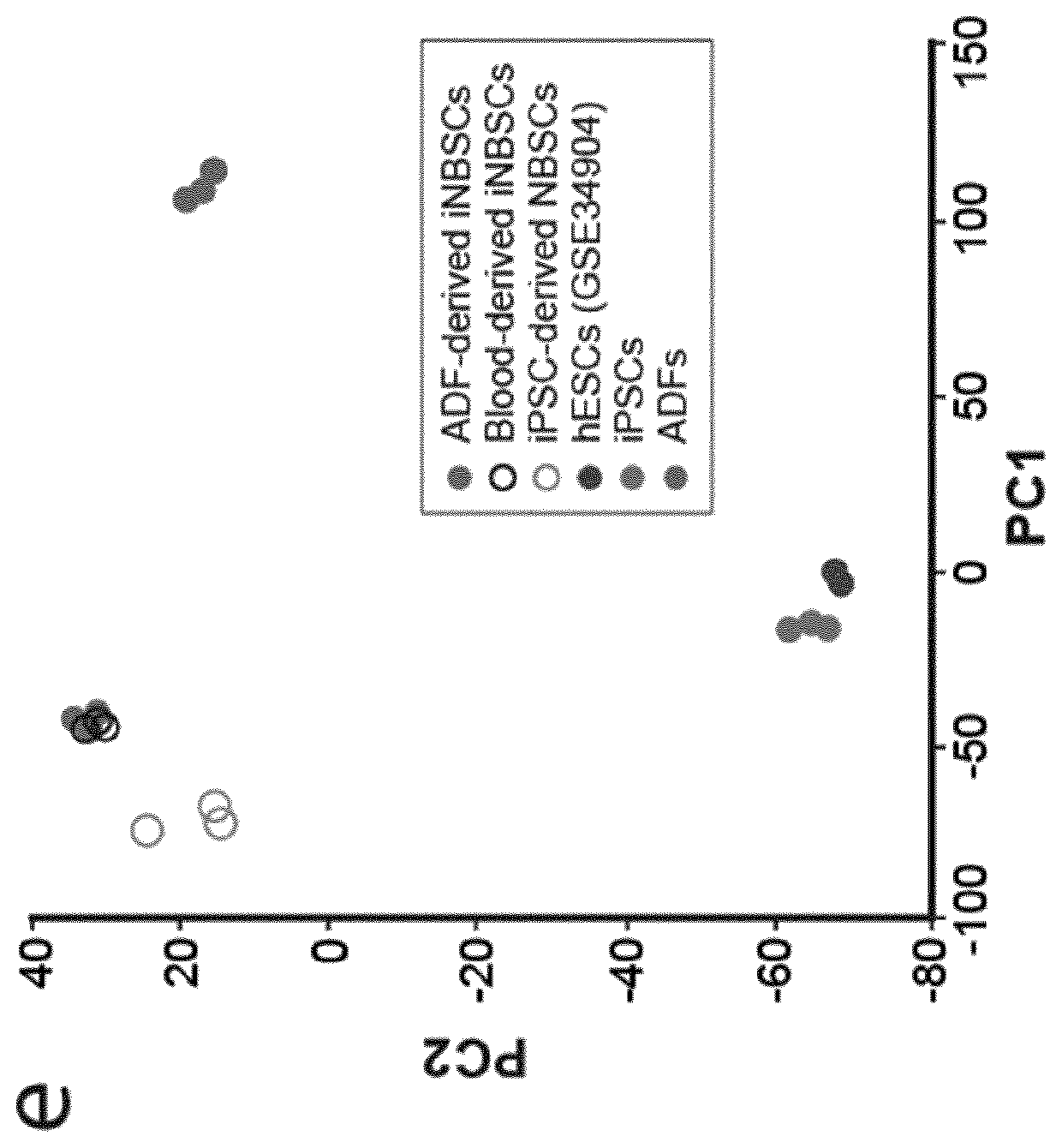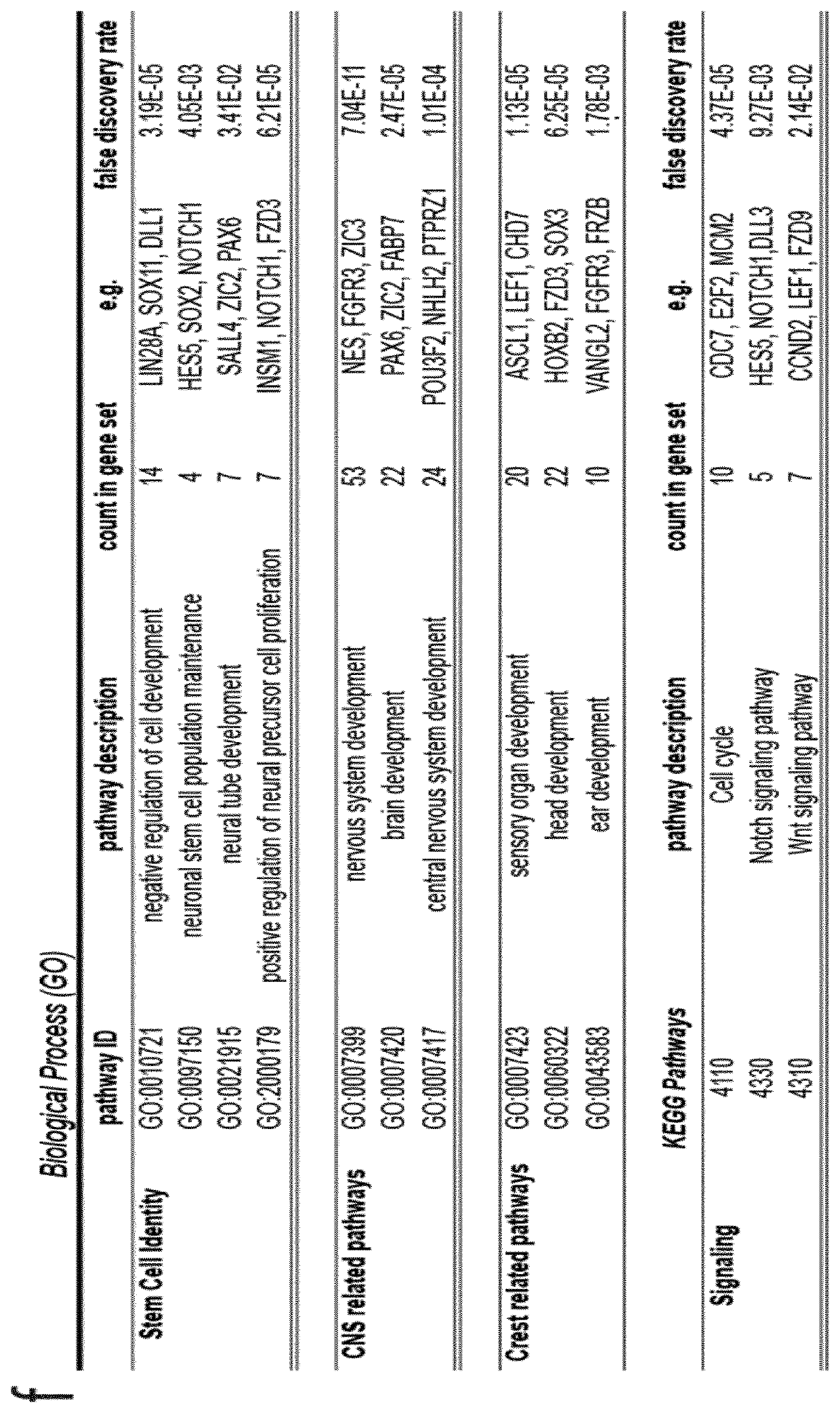Novel methods for the generation and use of human induced neural border stem cells
a neural border stem cell and human induced technology, applied in the field of human induced neural border stem cell generation, can solve the problems of esc- and ipsc-derived nspc generation, risk of co-maintenance of tumour-prone pluripotent remnants, and particularly problematic cell types derived therof,
- Summary
- Abstract
- Description
- Claims
- Application Information
AI Technical Summary
Benefits of technology
Problems solved by technology
Method used
Image
Examples
example 1
duction and Reprogramming into Induced Neural Border Stem Cells
[0345]For the production of lentiviral particles plasmids encoding for pHAGE2-TetO-BKSZ-flox or m2RTTA (39, Addgene plasmid #20342) were transfected together with helper plasmids psPAX2 (Addgene plasmid #12260) and pMD2.G (Addgene plasmid #12259) into 293FT cell lines (Life technologies) as described elsewhere (40).
[0346]Lentiviral supernatants containing BKSZ-flox and m2RTTA were mixed in a ratio of 2:1, supplemented with 5 μg / ml polybrene (Sigma) and used freshly for transduction of 8×105 / 6 Well primary ADF and pancreas fibroblasts. For reprogramming of PBMCs the lentiviral supernatant was concentrated via ultracentrifugation and PBMCs were transduced in QBSF-60 Stem Cell Medium (Quality Biological) containing 50 μg / ml Ascorbic Acid (Sigma), 50 ng / ml SCF (R&D Systems), 10 ng / ml IL-3 (R&D Systems), 2 U / ml EPO (R&D Systems), 40 ng / ml IGF-1 (Peprotech), 1 μM Dexamethasone (Sigma) and 5 μg / ml polybrene (for details see 41)...
example 2
of BSKZ Flox
[0349]For the excision of the transgene cassette 5×105 iNBSCs were seeded onto fresh feeders and transfected with a plasmid encoding for a Cherry-Cre as previously described (42). 48 hours later cells were harvested and sorted for Cherry fluorescence. 5000 cherry positive cells were seeded onto a 10 cm dish coated with feeders and incubated until colonies became apparent. Single colonies were picked and checked for transgene removal by transgene-specific PCRs on genomic DNA.
example 3
n of Human PBMCs and ADFs
[0350]PBMCs were derived from healthy male donors (Age 24-30) and isolated using the Ficoll gradient procedure. PBMCs were used either directly or frozen in 90% Serum Replacement / 10% DMSO as previously described (for details see 41).
[0351]Adult dermal fibroblasts were derived from skin biopsies of healthy male donors (Age 24-30) as described in Meyer et al. 2015 (43). ADFs were expanded until passage 4 and frozen in 90% Serum / 10% DMSO prior to use.
[0352]All cultures were grown at 37° C. in 5% CO2 and 20% O2.
[0353]Cells were derived under informed consent from all donors and handled in accordance with Ethics Committee II of Heidelberg University approval no. 2009-350N-MA.
Culture of Human Fetal Pancreas Fibroblasts
[0354]Human Primary Pancreatic Fibroblast were obtained from Vitro Biopharma and cultured in MSC-Gro™ medium (Vitro Biopharma) supplemented with 10% FCS. Cells were expanded for 4 passages prior to use. Cells were grown at 37° C. in 5% CO2 and 20% O2...
PUM
 Login to View More
Login to View More Abstract
Description
Claims
Application Information
 Login to View More
Login to View More - R&D
- Intellectual Property
- Life Sciences
- Materials
- Tech Scout
- Unparalleled Data Quality
- Higher Quality Content
- 60% Fewer Hallucinations
Browse by: Latest US Patents, China's latest patents, Technical Efficacy Thesaurus, Application Domain, Technology Topic, Popular Technical Reports.
© 2025 PatSnap. All rights reserved.Legal|Privacy policy|Modern Slavery Act Transparency Statement|Sitemap|About US| Contact US: help@patsnap.com



